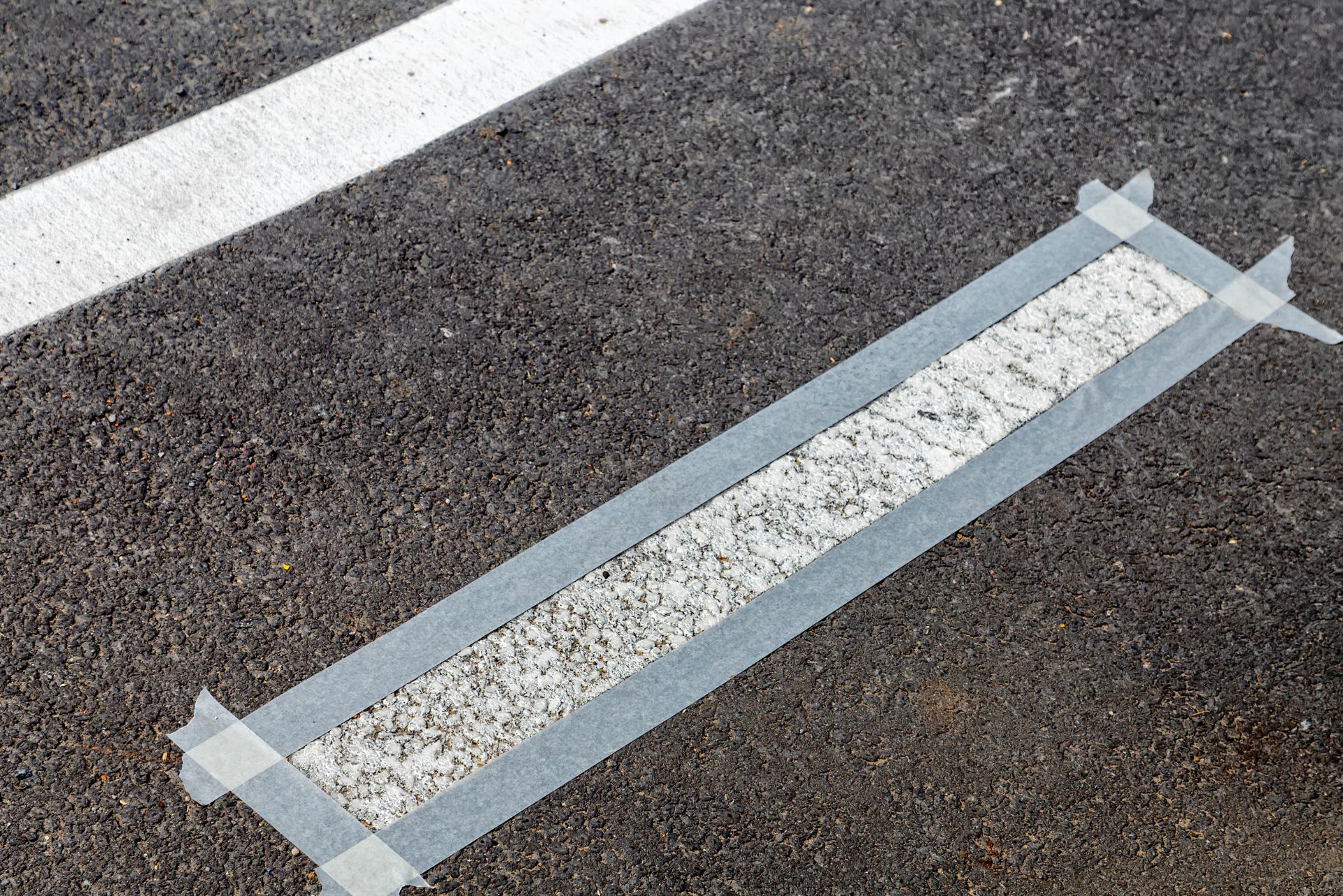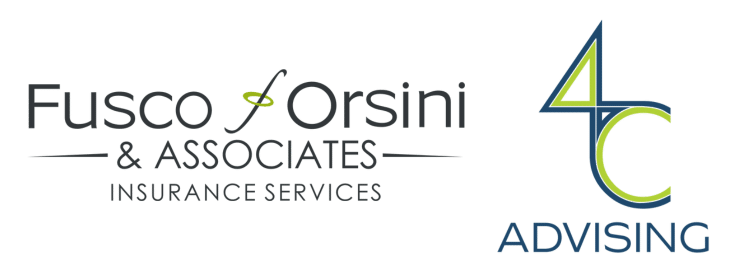Top 3 Recommended Policies

California's highway system is undergoing a major transformation with the California Department of Transportation (Caltrans) set to re-stripe over 50,000 lane miles using 6-inch-wide, highly reflective road striping within the next decade. This ambitious project aims to enhance roadway safety, especially at night, by improving visibility for drivers. For contractors working in line striping and pavement marking, this surge in activity brings not only opportunity but also unique risks that demand specialized insurance coverage tailored to the industry’s demands.
Understanding the evolving landscape of line striping in California is essential for contractors who want to protect their businesses effectively. This article explores why specialized insurance matters, the latest trends shaping the industry, and how contractors can manage risks while capitalizing on growing demand.
Why Specialized Insurance Matters for Line Striping Contractors
Line striping and pavement marking contractors face a range of risks that differ from other construction trades. The work involves operating heavy machinery, working close to traffic, and using specialized materials that require careful handling. These factors increase the likelihood of accidents, property damage, and liability claims.
General liability insurance is a baseline requirement, but contractors should consider policies that address specific exposures such as traffic control liability, environmental risks from paint and sealants, and equipment coverage. For example, Caltrans has recently phased out two-component painted traffic stripes in favor of more durable materials as part of its Longitudinal Pavement Marking and Monitoring Policy, effective January 2024. This shift means contractors must adapt to new materials and processes, which can introduce unfamiliar risks worth insuring against.
Additionally, maintaining pavement markings with durable materials is critical not only for safety but also for cost-effectiveness. Linemark Striping highlights that using high-quality marking materials and following performance specifications can improve safety outcomes while reducing long-term maintenance costs. Contractors who understand these nuances can better advise clients and protect their own operations through tailored insurance policies.
Moreover, the nature of line striping work often requires contractors to operate in high-traffic areas, which can pose unique challenges. The presence of vehicles and pedestrians increases the potential for accidents, making it essential for contractors to implement rigorous safety protocols. This includes proper signage, traffic control measures, and worker training to minimize risks. Insurance policies that cover these specific operational hazards can provide peace of mind, allowing contractors to focus on delivering quality work without the constant worry of potential liabilities.
Furthermore, the evolving landscape of regulations and standards in the construction industry adds another layer of complexity for line striping contractors. Compliance with local, state, and federal guidelines is crucial, as failure to adhere to these regulations can result in fines or legal repercussions. Specialized insurance can help mitigate the financial impact of compliance-related issues, ensuring that contractors are protected against unforeseen legal challenges. By staying informed about industry changes and investing in appropriate coverage, contractors can position themselves as reliable partners in the construction ecosystem, enhancing their reputation and fostering long-term client relationships.
Industry Growth and Its Impact on Contractor Risk
The line striping industry is expanding rapidly. Sales jumped from $90 million in 2024 to $134.12 million in 2025, a remarkable 48.9% increase. This growth reflects rising demand driven by infrastructure upgrades and safety initiatives like Caltrans’ re-striping project. Contractors are busier than ever, but increased workloads can also mean greater exposure to accidents and claims.
With more projects underway, the risk of property damage, bodily injury, and contractual disputes grows. Insurance policies must keep pace with this expansion. Contractors should ensure their coverage limits are adequate for larger projects and that their policies include protections for subcontractors, equipment breakdown, and potential environmental liabilities.
At the same time, advancements in line striping technology, such as GPS integration and automation, are improving precision and productivity. These innovations can reduce human error and enhance safety but also require contractors to invest in training and equipment upgrades. Insurance providers often look favorably on contractors who adopt such technologies, as they demonstrate a commitment to reducing risk.
Moreover, as the industry grows, so does the complexity of projects. Contractors are increasingly tasked with managing multiple sites simultaneously, each with its own unique challenges and regulatory requirements. This heightened complexity necessitates robust project management strategies and a keen understanding of local laws and ordinances. Failing to navigate these intricacies can lead to costly delays and penalties, further amplifying the risks associated with each project.
Additionally, the competitive landscape of the line striping industry is evolving. With more contractors entering the market, pricing pressures are intensifying. While this competition can drive innovation and efficiency, it can also lead to underbidding, where contractors take on projects at unsustainable rates. This practice not only jeopardizes the financial health of the contracting business but can also compromise safety standards, as corners may be cut to meet tight budgets. As such, maintaining a balance between competitive pricing and quality service is crucial for long-term success in this booming industry.

Safety Benefits of Wider and Reflective Striping
Research by the Federal Highway Administration (FHWA) confirms that wider edge lines on roadways significantly reduce crashes and fatalities. California’s decision to increase striping width to 6 inches aligns with these findings, aiming to enhance nighttime visibility and overall traffic safety. The retroreflectivity of pavement markings is a key factor in this effort, as it helps drivers see lane boundaries clearly in low-light conditions. Enhanced visibility is especially critical in areas with high pedestrian traffic or where cyclists share the road, as it allows all users to navigate safely, reducing the likelihood of accidents.
For contractors, this means working with materials that meet strict retroreflectivity standards and maintaining those markings over time. The FHWA emphasizes that consistent maintenance of pavement markings is crucial to sustaining safety benefits. This creates ongoing business opportunities but also underscores the importance of reliable insurance coverage that protects against liabilities related to material failures or improper application. Moreover, the integration of advanced technologies, such as thermoplastic striping and high-performance paints, can further enhance the durability and visibility of road markings, ensuring they withstand the wear and tear of traffic and weather conditions.
Contractors who prioritize quality and compliance with safety standards not only contribute to public safety but also strengthen their reputation and reduce the risk of costly claims. By investing in training and innovative application techniques, they can ensure that their work meets or exceeds regulatory requirements, fostering trust with local governments and communities. Additionally, as more municipalities recognize the importance of effective striping, contractors may find themselves at the forefront of a growing industry trend, advocating for safer roadways while simultaneously expanding their service offerings to include comprehensive traffic management solutions.
Cost Savings Through Proper Pavement Maintenance
Beyond safety, pavement maintenance has significant financial implications. The Pavement Coatings Technology Center found that applying sealcoat every three years can save an average of $152,500 over 15 years for a commercial parking lot. This represents a 48% cost saving compared to unmaintained asphalt surfaces. For contractors, this highlights the value of offering maintenance services alongside new striping projects.
Providing clients with comprehensive pavement care solutions can differentiate a contractor in a competitive market. It also means managing the risks associated with ongoing maintenance work, which insurance policies should cover. This includes protection against damage to client property and potential environmental hazards from sealcoat chemicals.
Moreover, regular maintenance not only extends the lifespan of the pavement but also enhances its aesthetic appeal, which can be a crucial factor for businesses that rely on customer impressions. A well-maintained parking lot or roadway reflects professionalism and attention to detail, potentially attracting more customers and increasing foot traffic. Additionally, the reduction in potholes and cracks leads to fewer accidents, which can further bolster a company's reputation and reduce liability concerns.
Contractors who understand the long-term benefits of maintenance can position themselves as trusted advisors, enhancing client relationships and business stability. By educating clients on the importance of proactive maintenance, contractors can foster a sense of partnership, where clients feel supported in their investment. This approach not only leads to repeat business but can also open doors to referrals, as satisfied clients are likely to recommend services to their peers. Furthermore, implementing technology, such as pavement management software, can streamline the maintenance scheduling process, making it easier for contractors to track and manage their projects efficiently, ultimately leading to increased profitability.

Choosing the Right Insurance Coverage
Given the complexities of line striping and pavement marking work, contractors should look for insurance policies that address the full spectrum of risks. Key coverages to consider include:
- General Liability: Covers bodily injury, property damage, and third-party claims.
- Commercial Auto: Essential for contractors who transport equipment and materials.
- Equipment Coverage: Protects specialized line striping machinery from damage or theft.
- Pollution Liability: Addresses environmental risks from paints, coatings, and sealants.
- Workers’ Compensation: Required for employee injuries on the job.
- Contractual Liability: Covers risks related to contracts and subcontractor agreements.
Consulting with an insurance professional experienced in construction and pavement marking is critical. They can tailor policies to fit project sizes, client requirements, and regulatory standards. Linemark Striping stresses the importance of using durable materials and adhering to performance specifications, which can also influence insurance underwriting and premiums.
Additionally, contractors should be aware of the potential for fluctuating insurance costs based on claims history and the nature of the projects undertaken. For instance, a contractor who consistently engages in high-risk activities may face higher premiums than one who maintains a safer operational profile. It's also wise to review and update insurance coverage regularly, especially when expanding services or investing in new equipment. This proactive approach not only ensures compliance with industry standards but also provides peace of mind, allowing contractors to focus on delivering quality work without the looming worry of unforeseen liabilities.
Moreover, understanding the nuances of various insurance policies can empower contractors to make informed decisions that align with their business strategies. For example, some insurers may offer discounts for implementing safety training programs or utilizing advanced technology in line striping operations. By investing in risk management initiatives, contractors can not only enhance their safety protocols but also potentially lower their insurance costs over time. This dual benefit highlights the interconnectedness of operational excellence and financial prudence in the construction industry.
Preparing for the Future of Line Striping in California
The next decade promises continued growth and innovation in California’s line striping sector. Contractors who stay informed about regulatory changes, such as Caltrans’ transition away from two-component painted traffic stripes, will be better positioned to adapt and thrive. Embracing new technologies like GPS-enabled striping equipment can improve accuracy and efficiency, reducing risks and boosting profitability. As the demand for sustainable practices increases, contractors may also explore eco-friendly materials that not only comply with environmental regulations but also appeal to a growing base of environmentally conscious clients. This shift towards sustainability can enhance a contractor's reputation and open up new avenues for business.
Insurance coverage must evolve alongside these changes. Contractors should regularly review their policies to ensure they reflect current operations and emerging risks. Staying proactive with risk management and safety training will also help minimize claims and maintain a strong insurance standing. Additionally, as technology advances, the potential for cyber risks, such as data breaches or system failures, becomes more pertinent. Contractors should consider incorporating cyber liability insurance into their coverage to protect against these modern threats, ensuring that their business remains resilient in an increasingly digital landscape.
For contractors ready to take on California’s expanding pavement marking projects, the right insurance is more than a safety net-it is a strategic asset that supports growth and stability. Understanding the nuances of various insurance products, from general liability to specialized coverage for equipment and materials, can empower contractors to make informed decisions that align with their business goals. Furthermore, networking with industry peers and participating in local trade associations can provide valuable insights into best practices and emerging trends, fostering a collaborative environment that drives innovation and excellence in line striping.
Frequently Asked Questions
Q: Why is 6-inch-wide striping becoming the standard in California?
A: Wider striping improves nighttime visibility and reduces crashes, supported by research from the Federal Highway Administration. This shift is particularly crucial in urban areas where traffic density is high, and the risk of accidents increases. The enhanced visibility provided by the 6-inch stripes not only aids drivers in making safer decisions but also helps pedestrians and cyclists navigate roadways more effectively, contributing to overall road safety.
Q: What risks are unique to line striping contractors?
Working near traffic, handling specialized materials, and using heavy equipment create risks like accidents, environmental exposure, and property damage. Additionally, contractors must be vigilant about weather conditions, as rain or fog can exacerbate these risks. Training and safety protocols are essential to mitigate these hazards, including the use of personal protective equipment (PPE) and implementing traffic control measures to safeguard both workers and the public during line striping operations.
Q: How does pavement maintenance save money?
Regular sealcoating extends asphalt life, saving up to 48% over 15 years compared to unmaintained surfaces. This proactive approach not only reduces the frequency of costly repairs but also enhances the aesthetic appeal of roadways, which can positively impact property values in surrounding areas. Furthermore, well-maintained pavements are less prone to cracking and potholes, leading to a smoother driving experience and fewer vehicle maintenance costs for drivers.
Q: What insurance coverages should line striping contractors prioritize?
General liability, equipment coverage, pollution liability, commercial auto, and workers’ compensation are essential. Each of these coverages plays a critical role in protecting contractors from potential financial losses due to accidents, equipment failures, or environmental incidents. Additionally, contractors may consider umbrella insurance for extra protection, ensuring comprehensive coverage that addresses the unique challenges faced in the line striping industry.
Q: How are new technologies impacting the line striping industry?
GPS and automation enhance precision and productivity, reducing human error and improving safety. These advancements allow for more efficient project management, enabling contractors to plan and execute jobs with greater accuracy and speed. Moreover, the integration of data analytics helps contractors assess the effectiveness of their striping patterns and make informed decisions about future projects, ultimately leading to better resource allocation and improved outcomes for clients.
Q: What changes has Caltrans made to pavement marking materials?
Caltrans is phasing out two-component painted traffic stripes in favor of more durable materials as of January 2024. This transition aims to improve the longevity and visibility of road markings, particularly in areas with heavy traffic and adverse weather conditions. The new materials are designed to withstand the rigors of California's diverse climate, ensuring that road markings remain clear and effective for longer periods, thereby enhancing overall road safety and reducing maintenance costs for the state.
Contact Us
Phone
Location




